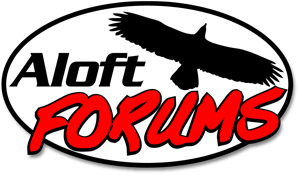Konrad
Very Strong User
A few years ago I noticed that there was an up tick of new servos coming on the market. I recall FrSky had some S-bus servos in the 9gram class. I'm wondering it there is an inherent problem with S-Bus as I haven't seen any new servos coming on the market that is S-Bus compliant. In fact now that Fr Sky doesn't market servos there are even less than yesterday. Are the Futaba S-Bus, S-Bus 2 servos compatible with the Fr-Sky S-bus receiver?
I have noticed that Aloft sells an add on decoder that allows one to convert PWM servos to S-Bus. $10 dollars makes it hard to justify converting some of the economy servos. But sometimes it might make a few set ups easier.
https://alofthobbies.com/frsky-sd1-sbus-converter.html
I have noticed that Aloft sells an add on decoder that allows one to convert PWM servos to S-Bus. $10 dollars makes it hard to justify converting some of the economy servos. But sometimes it might make a few set ups easier.
https://alofthobbies.com/frsky-sd1-sbus-converter.html
Last edited:
